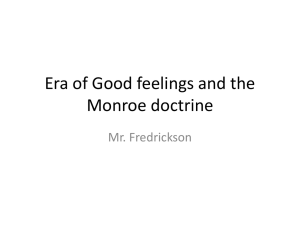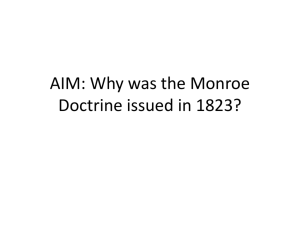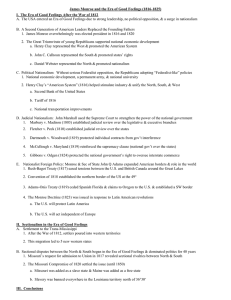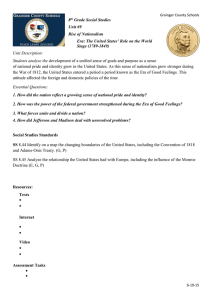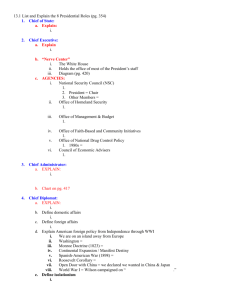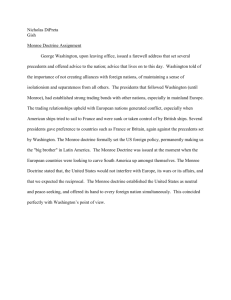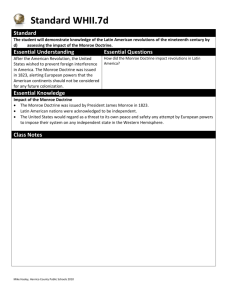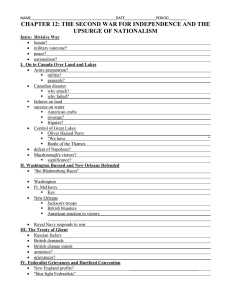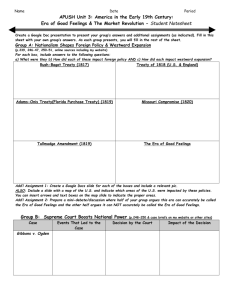American Nationalism
advertisement
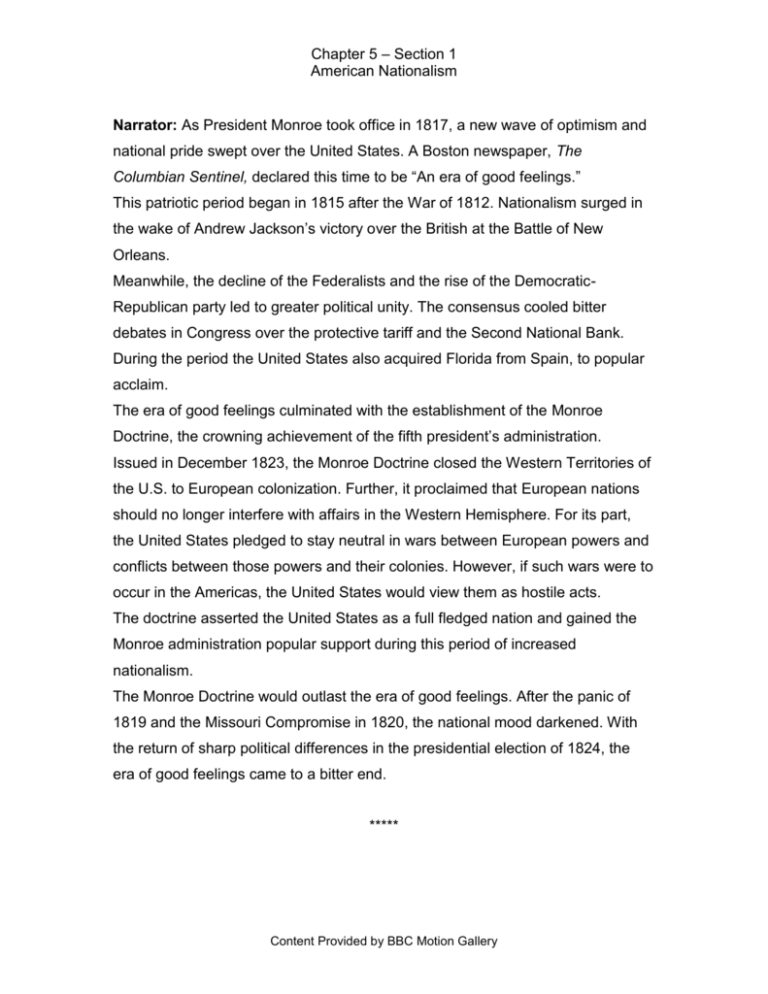
Chapter 5 – Section 1 American Nationalism Narrator: As President Monroe took office in 1817, a new wave of optimism and national pride swept over the United States. A Boston newspaper, The Columbian Sentinel, declared this time to be “An era of good feelings.” This patriotic period began in 1815 after the War of 1812. Nationalism surged in the wake of Andrew Jackson’s victory over the British at the Battle of New Orleans. Meanwhile, the decline of the Federalists and the rise of the DemocraticRepublican party led to greater political unity. The consensus cooled bitter debates in Congress over the protective tariff and the Second National Bank. During the period the United States also acquired Florida from Spain, to popular acclaim. The era of good feelings culminated with the establishment of the Monroe Doctrine, the crowning achievement of the fifth president’s administration. Issued in December 1823, the Monroe Doctrine closed the Western Territories of the U.S. to European colonization. Further, it proclaimed that European nations should no longer interfere with affairs in the Western Hemisphere. For its part, the United States pledged to stay neutral in wars between European powers and conflicts between those powers and their colonies. However, if such wars were to occur in the Americas, the United States would view them as hostile acts. The doctrine asserted the United States as a full fledged nation and gained the Monroe administration popular support during this period of increased nationalism. The Monroe Doctrine would outlast the era of good feelings. After the panic of 1819 and the Missouri Compromise in 1820, the national mood darkened. With the return of sharp political differences in the presidential election of 1824, the era of good feelings came to a bitter end. ***** Content Provided by BBC Motion Gallery
